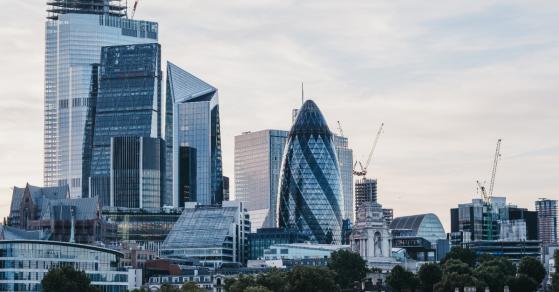The British economy demonstrated unexpected strength in May, growing by 0.4% according to flash figures published by the Office for National Statistics (ONS) on Thursday.
This growth rate surpassed the 0.2% forecasted by a Reuters poll of economists, signaling a positive shift following a period of economic stagnation.
The UK economy had previously exited a shallow recession in the first quarter of the year but showed no growth in April. The latest figures indicate a rebound, driven by gains in several key sectors.
The services sector, a crucial component of the British economy, grew by 0.3% in May. Additionally, production and construction sectors saw increases of 0.2% and 1.9%, respectively.
Sterling reaches new heights
In response to the encouraging economic data, the British pound surged to its highest level against the US dollar since March 8, 2024. By 8:30 a.m. in London, sterling was trading 0.14% higher at $1.2863, according to LSEG data.
This rise in the pound reflects investor confidence in the UK’s economic recovery and future prospects.
Labour Party’s impact on economic optimism
The economic upturn coincides with the Labour Party’s recent election victory, which saw Keir Starmer assume the role of Prime Minister.
Labour’s campaign focused on boosting economic growth, housing, and planning, and their large parliamentary majority has fostered optimism among analysts and investors.
Goldman Sachs (NYSE:GS) recently upgraded its growth forecast for the UK, citing the new government’s business-friendly stance as a positive influence on UK assets.
Ashley Webb, a UK economist at Capital Economics, noted that the recent GDP increases, barring the lack of growth in April, suggest that the adverse effects of higher interest rates and inflation are beginning to diminish. This trend supports the notion that the UK economy is gradually recovering from previous economic pressures.
Inflation and interest rate outlook
Inflation in the UK has significantly decreased from its 41-year high of 11.1% in October 2022 to the Bank of England’s 2% target in May this year. This reduction in inflation has raised expectations for a potential interest rate cut by the Bank of England (BOE).
However, the BOE adopted a cautious approach during its June meeting, noting that indicators of inflation persistence remained high. The market remains divided on whether the BOE will implement a rate cut at its upcoming August meeting.
Labour’s economic agenda
The newly elected Labour government faces the challenge of sustaining the economic momentum. Muniya Barua, deputy chief executive at industry campaign group BusinessLDN, emphasized the need for high-impact, low-cost measures to attract private investment.
Barua suggested overhauling the apprenticeship system and eliminating stamp duty on share transactions as potential strategies.
Finance Minister Rachel Reeves has already outlined several initiatives, including mandatory house-building targets, lifting the ban on new onshore wind farms in England, and reforming planning rules.
Additionally, she announced a £7.3 billion ($9.4 billion) national wealth fund aimed at attracting private sector investment in UK infrastructure projects.
The business community is now anticipating Labour’s first fiscal statement, expected no earlier than mid-September.
Lindsay James, an investment strategist at Quilter (LON:QLT) Investors, noted that this statement should clarify taxation and spending plans, allowing businesses to plan ahead and potentially stimulating further investment.
However, James cautioned that meaningful acceleration in GDP growth might take time to materialize as businesses await a clearer understanding of future policies.
This article first appeared on Invezz.com
